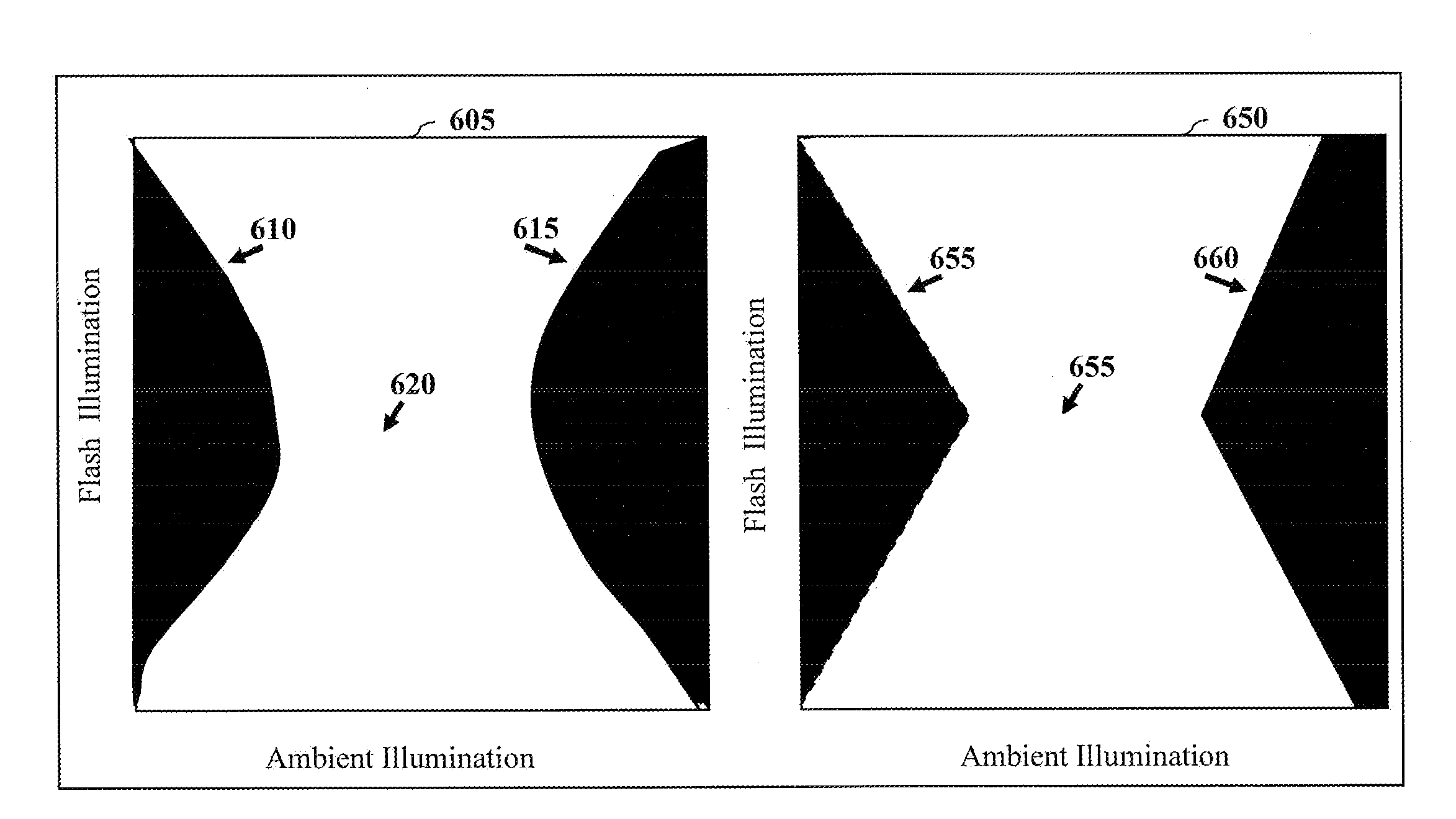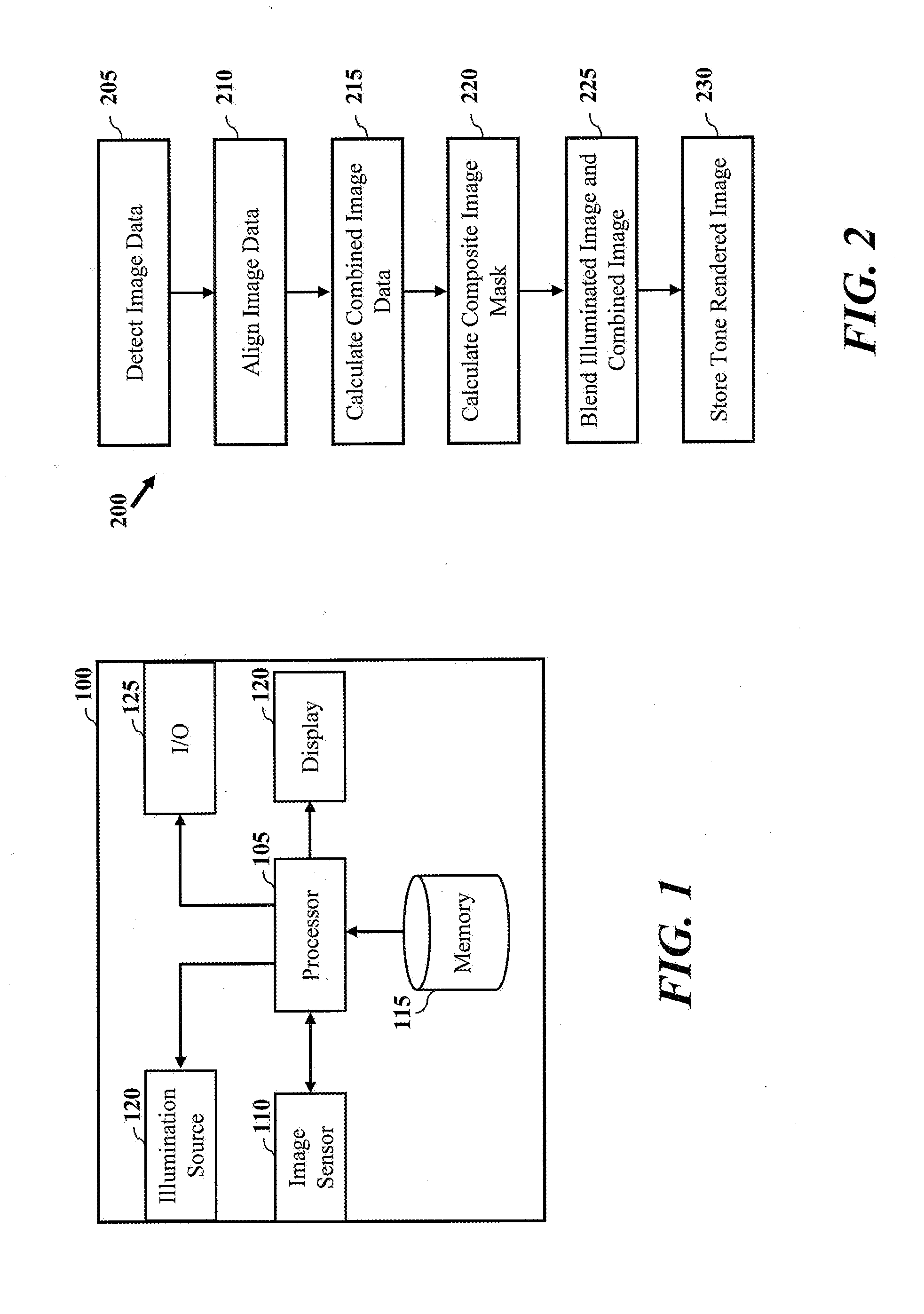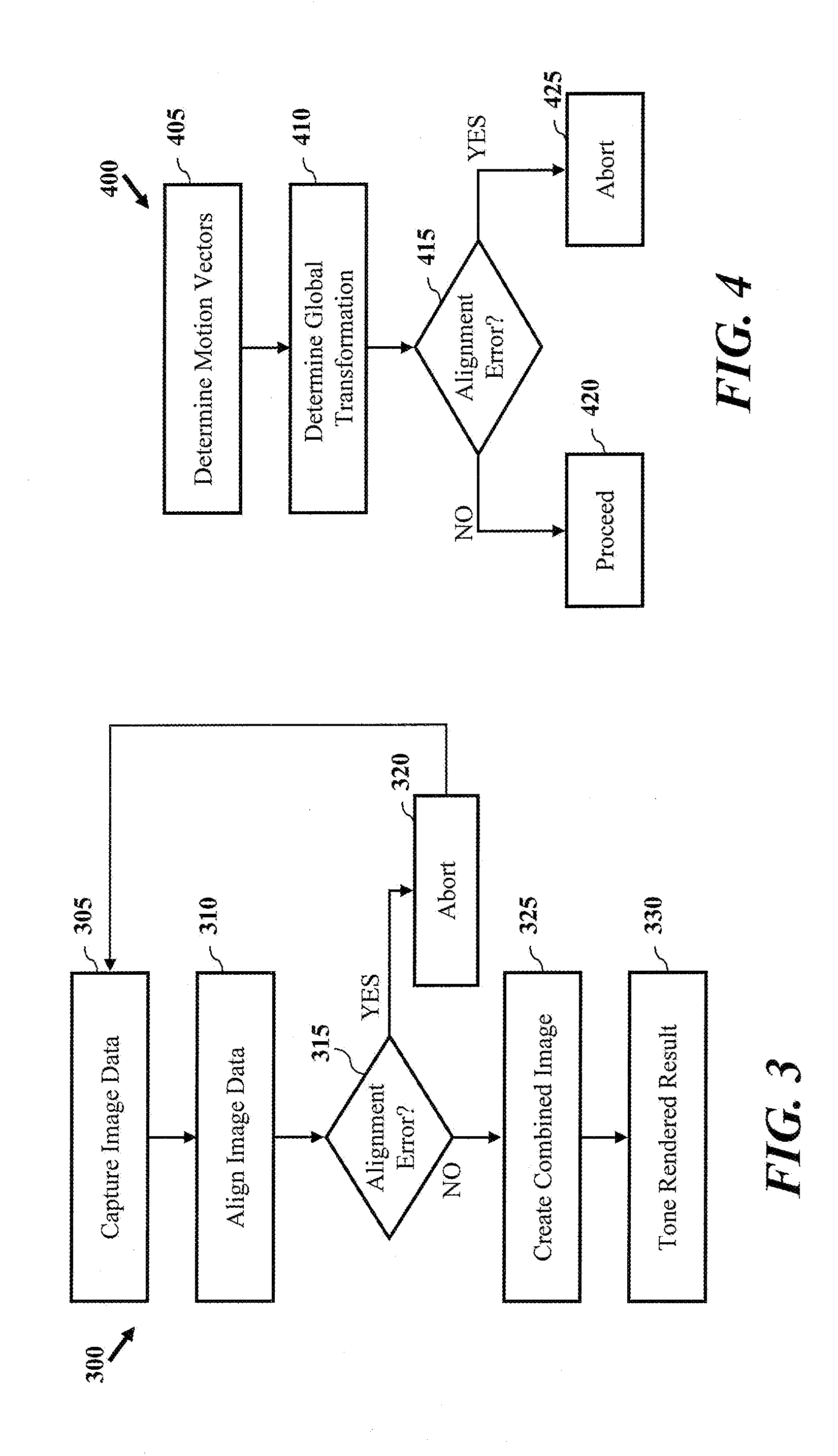Method and apparatus for low-light imaging enhancement
a low-light imaging and enhancement technology, applied in the field of imaging, can solve the problems of amplifying electronic and photonic noise, images captured in low-light can appear noisy and contain less high-frequency content, images captured with flash can produce harsh flat appearance, etc., to maximize an objective quality criterion and enhance low-light imaging
- Summary
- Abstract
- Description
- Claims
- Application Information
AI Technical Summary
Benefits of technology
Problems solved by technology
Method used
Image
Examples
Embodiment Construction
Overview and Terminology
[0016]One aspect of the present invention relates to enhancing low-light image data capture. In one embodiment, process is provided for enhancement including detecting image data associated with ambient lighting of a scene, and detecting image data with artificial illumination or lighting (e.g., flash) of a scene. The process may include alignment of the captured image data, and calculation of a composite image. The process may further include determining an image parameter, such as a composite mask, and blending image data associate with image data captured with artificial light, and the composite image based on an image parameter, such as a masking image. As such, details may be selected from one or more of the image data captured using ambient light and image data captured based on artificial illumination. In addition, tone rendered blending of composite image data may be employed to optimize combination of image data.
[0017]In another embodiment, an imagin...
PUM
 Login to View More
Login to View More Abstract
Description
Claims
Application Information
 Login to View More
Login to View More - R&D
- Intellectual Property
- Life Sciences
- Materials
- Tech Scout
- Unparalleled Data Quality
- Higher Quality Content
- 60% Fewer Hallucinations
Browse by: Latest US Patents, China's latest patents, Technical Efficacy Thesaurus, Application Domain, Technology Topic, Popular Technical Reports.
© 2025 PatSnap. All rights reserved.Legal|Privacy policy|Modern Slavery Act Transparency Statement|Sitemap|About US| Contact US: help@patsnap.com



